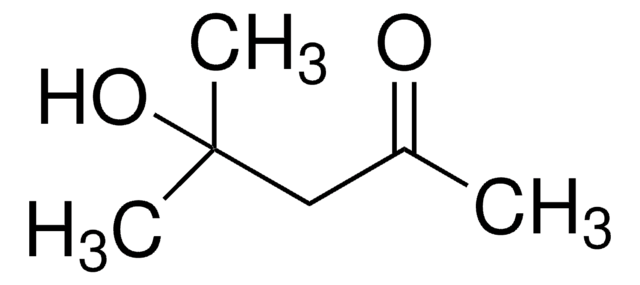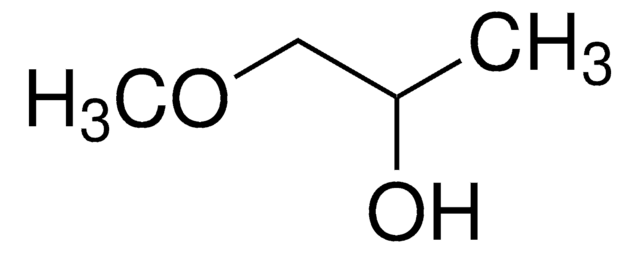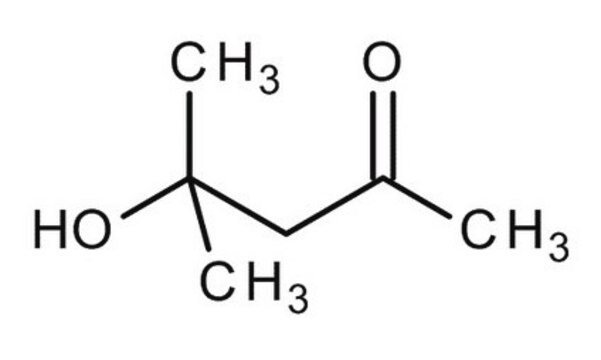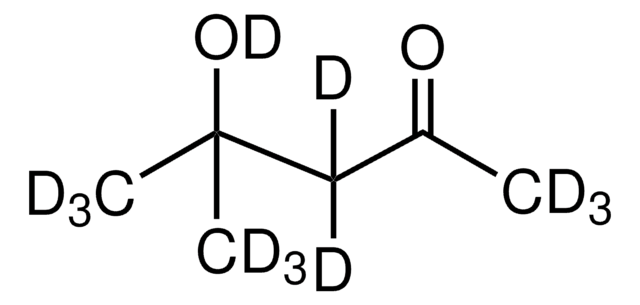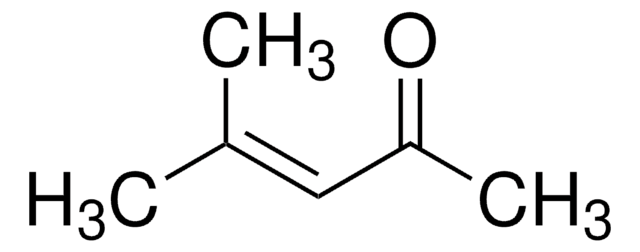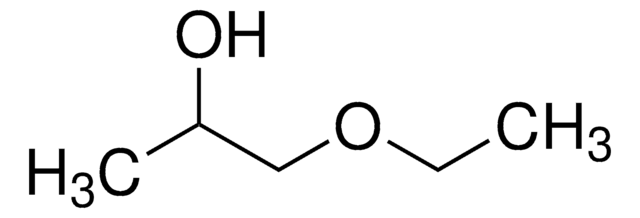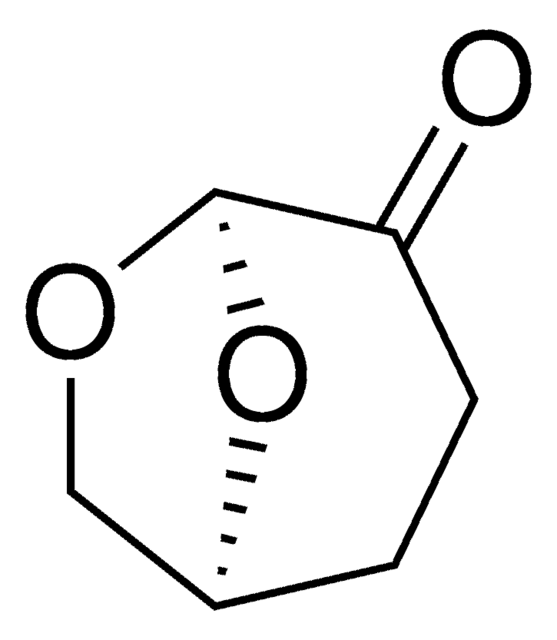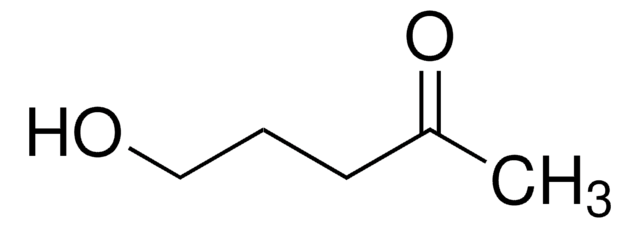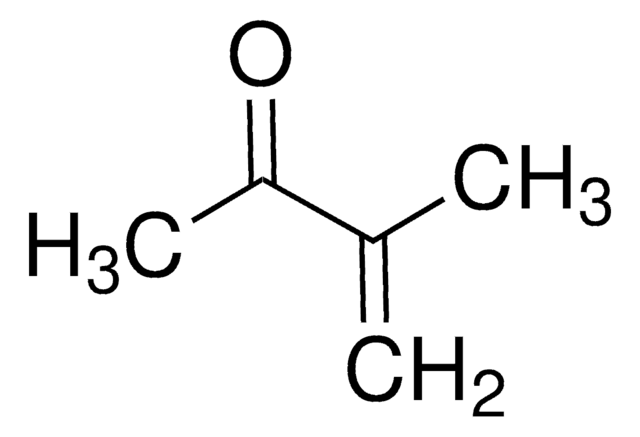H41544
4-Hydroxy-4-methyl-2-pentanone
99%
Synonyme(s) :
Diacetone alcohol
About This Item
Produits recommandés
Densité de vapeur
4 (vs air)
Niveau de qualité
Pression de vapeur
<1 mmHg ( 20 °C)
Essai
99%
Forme
liquid
Limite d'explosivité
6.9 %
Indice de réfraction
n20/D 1.423 (lit.)
pb
166 °C (lit.)
Densité
0.931 g/mL at 25 °C (lit.)
Chaîne SMILES
CC(=O)CC(C)(C)O
InChI
1S/C6H12O2/c1-5(7)4-6(2,3)8/h8H,4H2,1-3H3
Clé InChI
SWXVUIWOUIDPGS-UHFFFAOYSA-N
Vous recherchez des produits similaires ? Visite Guide de comparaison des produits
Description générale
Application
- Diolmonoesters by reacting with aldehydes via tandem aldol-transfer–Tischtschenko reaction catalyzed by trimethylaluminum.
- Aldol-transfer products such as β-hydroxy ketones by reacting with various aldehydes in the presence of L-proline as a catalyst.
- Mono-α-arylated ketones and esters via Pd catalyzed reaction with aryl halides and aryl triflates, respectively.
It can also be used as a complexing agent to synthesize double-metal cyanide (DMC) catalysts by reacting with metal salt (MX) and cyanometalate compounds.
Mention d'avertissement
Warning
Mentions de danger
Conseils de prudence
Classification des risques
Eye Irrit. 2 - Flam. Liq. 3 - Repr. 2 - STOT SE 3
Organes cibles
Respiratory system
Code de la classe de stockage
3 - Flammable liquids
Classe de danger pour l'eau (WGK)
WGK 1
Point d'éclair (°F)
136.4 °F - closed cup
Point d'éclair (°C)
58 °C - closed cup
Équipement de protection individuelle
Eyeshields, Gloves, type ABEK (EN14387) respirator filter
Faites votre choix parmi les versions les plus récentes :
Déjà en possession de ce produit ?
Retrouvez la documentation relative aux produits que vous avez récemment achetés dans la Bibliothèque de documents.
Les clients ont également consulté
Notre équipe de scientifiques dispose d'une expérience dans tous les secteurs de la recherche, notamment en sciences de la vie, science des matériaux, synthèse chimique, chromatographie, analyse et dans de nombreux autres domaines..
Contacter notre Service technique